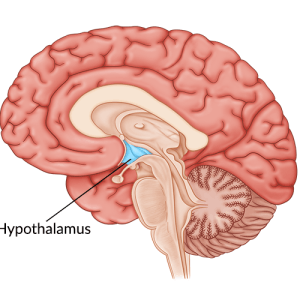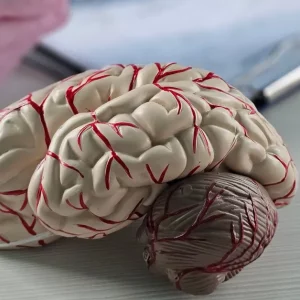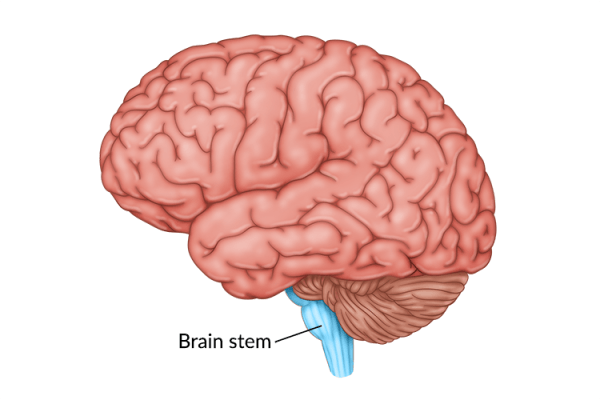A coma refers to a state of deep unconsciousness that can occur after a brain injury. When an individual is comatose, they do not show intentional responses or movement, their eyes remain closed, and they cannot be awakened. Having a loved one fall into a coma can be extremely frightening, but there is hope for them to regain consciousness.
To help you understand what to expect when someone is in a coma after brain injury, this article will discuss:
- What causes coma after brain injury?
- How long will it take for someone to awaken from a coma after brain injury?
- What to expect after your loved one awakens from a coma
- How to measure the severity of a coma
- What are the signs of coma recovery?
What Causes a Coma After Brain Injury?
Generally, the loss of consciousness that occurs when an individual falls into a coma is associated with damage to the brainstem. However, there are various events that can cause a coma after brain injury.
Typically, coma after brain injury is attributed to:
- damage to the arousal areas of the brain
- secondary damage from the shifting of structures inside the brain
- compression of the blood vessels
- increased intracranial pressure
Regardless of the event that triggers the coma, the same chain of events tends to occur: the brain swells, pushes up against the skull, and damages the reticular activating system (the part of the brainstem that controls arousal from sleep).
As result, individuals will exhibit no eye-opening, no verbal response, and no purposeful movement. These are the primary characteristics of a coma. While in a coma, a person is unresponsive and cannot wake up, even when stimulated.
In the following section, we’ll discuss how long it takes to wake up from a coma after brain injury.
How Long Will It Take for Someone to Awaken from Coma After Brain Injury?

Every brain injury is unique and as a result, every individual will regain consciousness from a coma at a different rate. Generally, the more severe the brain damage, the longer it will take for the individual to recover.
Sometimes, a patient may suddenly lose consciousness after being fully alert. Other times, unconscious individuals may gradually regain consciousness. Due to the unpredictable nature of consciousness in the early stages of traumatic brain injury, it is nearly impossible to predict when a patient will awaken from a coma in the first 24 hours after a traumatic brain injury.
However, a coma rarely lasts over a month. Instead, individuals who remain unconscious for prolonged periods typically progress to a wakeful but unconscious state called post-coma unresponsiveness. In the next section, we will discuss post-coma unresponsiveness and additional states of consciousness that may occur after a coma.
What to Expect After Waking Up from Coma After Brain Injury
After an individual awakens from a coma, they may experience various states of consciousness. Below, we’ll address 3 common states of consciousness: post-coma unresponsiveness, minimally conscious state, and post-traumatic amnesia.
It’s important to note that a person’s progression between these post-coma stages is not always linear. Recovery can cease at any of these stages, and sometimes the person will skip directly from a coma to post-traumatic amnesia.
Post-Coma Unresponsiveness
If a person has eye movement but no other signs of consciousness, they are in a wakeful but unconscious state known as post-coma unresponsiveness.
An individual with post-coma unresponsiveness has regained a normal sleep/wake cycle and should be able to open and close their eyes, as well as react to loud noises. While these may appear to be signs of consciousness, they are actually the result of involuntary, autonomic responses.
Post-coma states can endure for months, even years, before the patient regains consciousness. It isn’t until individuals can demonstrate some purposeful behavior that they have transitioned to a minimally conscious state.
Minimally Conscious State
As the individual recovers, they may regain a sense of awareness of the world around them. This is referred to as a minimally conscious state.
Generally, a minimally conscious individual should be able to follow instructions. While there will be times when they cannot, the individual should be demonstrating some ability to act with intention.
When they can consistently respond to instructions and communicate, they have entered a state of post-traumatic amnesia.
Post-Traumatic Amnesia
Individuals with post-traumatic amnesia often struggle with memory, so they may not be able to recognize familiar faces and may appear confused or disoriented. However, individuals with post-traumatic amnesia should be responsive and able to demonstrate purposeful action.
Nearly every coma patient who reaches the state of post-traumatic amnesia will make a functional recovery. In fact, patients who transition from a coma to a minimally conscious state within 8 weeks are most likely to transition to post-traumatic amnesia and regain higher functions.
Now that you understand the various states of post-coma consciousness, the following section will cover how to measure the severity of a coma.
How to Measure the Severity of a Coma After Brain Injury

Doctors often refer to the Glasgow Coma Scale (GCS) to measure the severity of a coma after brain injury. The Glasgow Coma Scale is a simple test that gauges the degree of impaired consciousness an individual exhibits following a traumatic brain injury. This involves observing one’s ability to open and close their eyes, verbally communicate, and move.
Based on how functional an individual’s responses are, they will be assigned a score between 3-15 points. The higher the number, the more conscious the individual is, and the greater their likelihood of making a full recovery.
Up next, we’ll discuss some signs to keep an eye out for when your loved one has emerged from a coma.
What are the Signs of Recovery from a Coma?
Most individuals that recover from coma exhibit signs of preserved brain function, such as the presence of neurological reflexes.
Some neurological reflexes that a doctor may look for in coma patients include:
- Pupillary reactivity. The pupils should shrink in response to a light being shone in the eyes.
- Oculocephalic response. The eyes should turn to the right when the individual’s head is turned to the left, and vice versa.
- Gag reflex. The individual should gag or cough if a cotton swab or endotracheal tube is placed down their throat.
Generally, if the patient retains these reflexes, it is an excellent sign that they will recover. However, if these reflexes are not initially present, it does not mean recovery is impossible. There are instances where individuals who do not demonstrate these reflexes go on to make a functional recovery.
Coma After Brain Injury: Key Points
After a traumatic brain injury, individuals may fall into a deep state of unconsciousness called a coma. While it’s impossible to wake someone out of a coma, there is always hope that they may regain consciousness.
We hope this article helped you understand why a coma may occur after brain injury and how to identify signs of recovery.










